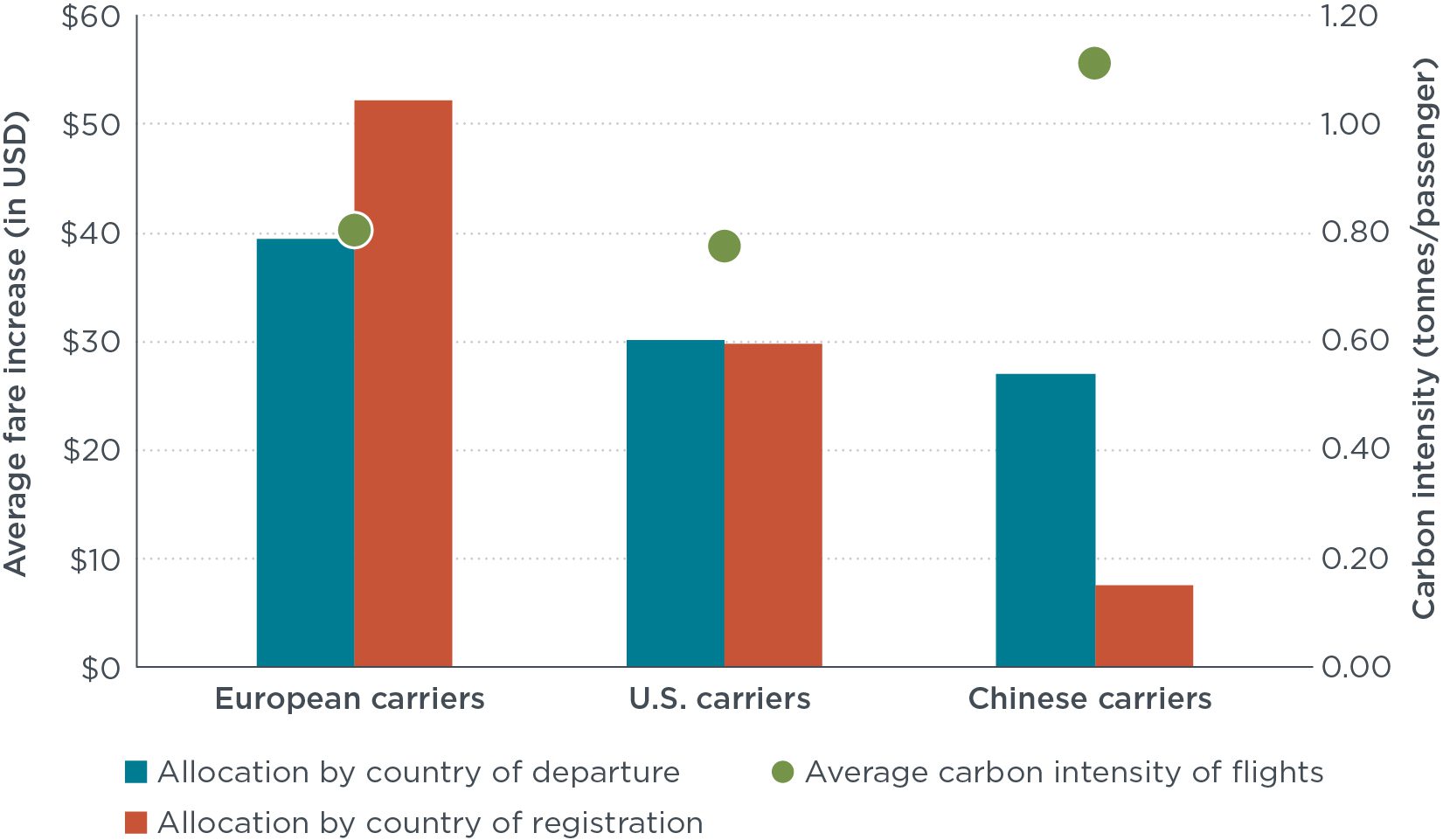Aviation climate finance using a global frequent flying levy
Working Paper
Regulating international aviation emissions without market distortion
The International Civil Aviation Organization (ICAO) set a Long-term Aspirational Goal (LTAG) to achieve net-zero CO2 emissions in international aviation by 2050, encouraging member countries to use State Action Plans (SAPs) as roadmaps towards this target. This paper assesses accounting approaches to regulate carbon dioxide (CO2) emissions in commercial aviation, which currently constitutes approximately 2.4% of global CO2 emissions and is expected to grow significantly.
Our analysis focuses on the market impacts of two different regulatory methods by analyzing 30 major international routes in China, Europe, and the United States. The study applies regional carbon taxes to airfares based on the operator’s country of registration and on the country of departure. The analysis found that regulating by country of registration introduces market distortions, potentially leading to higher airfares for carriers based in countries with higher carbon prices.

Figure 1. Average fare increase for 30 routes by carrier country of registration and allocation method, along with the average carbon intensity of routes by carrier country of registration.
